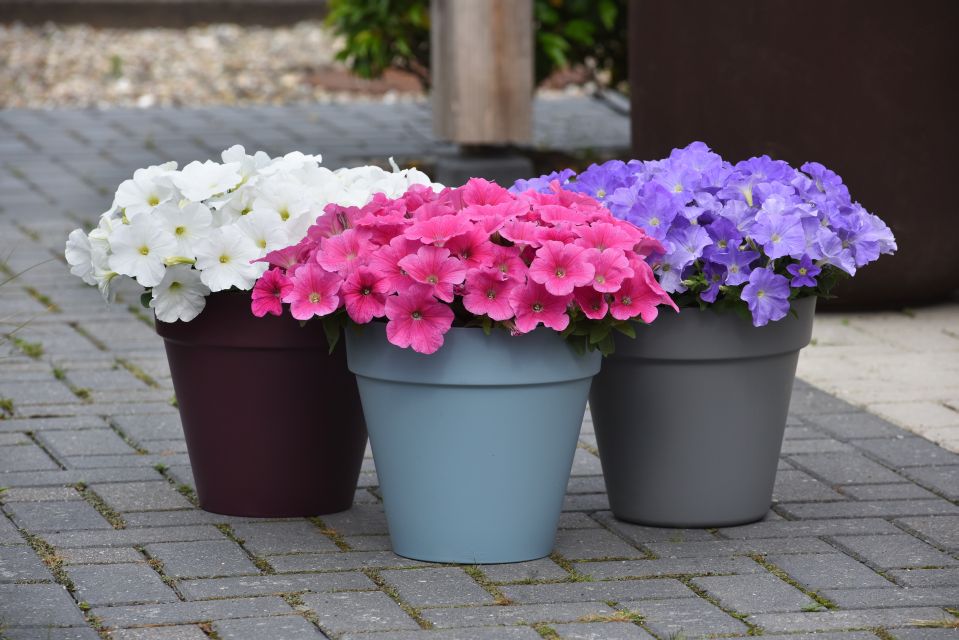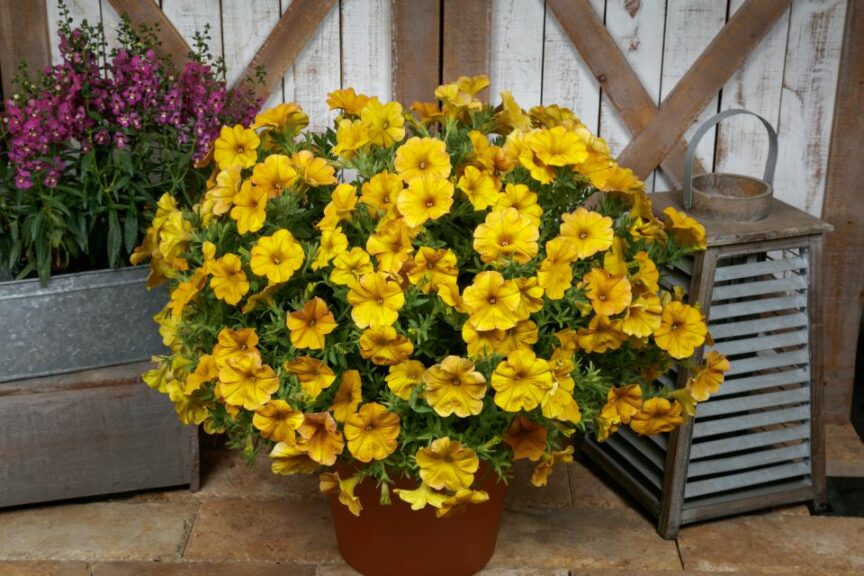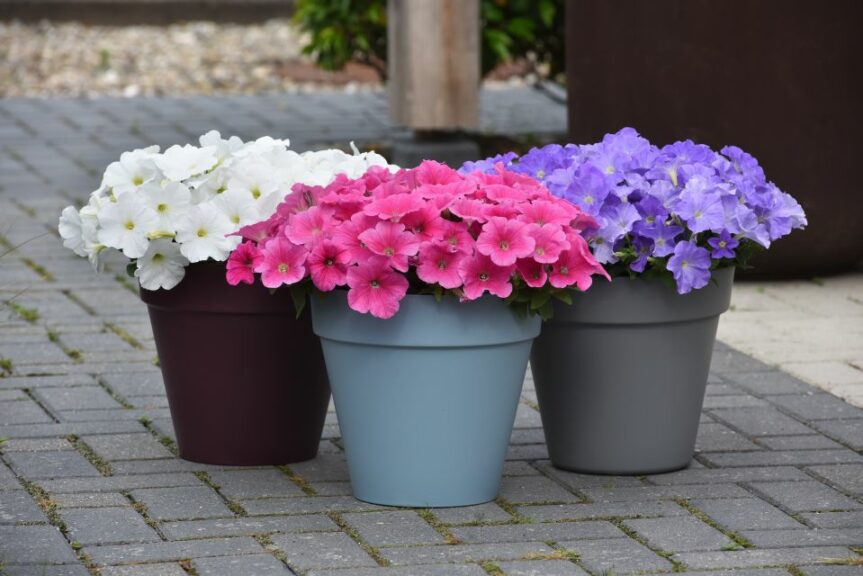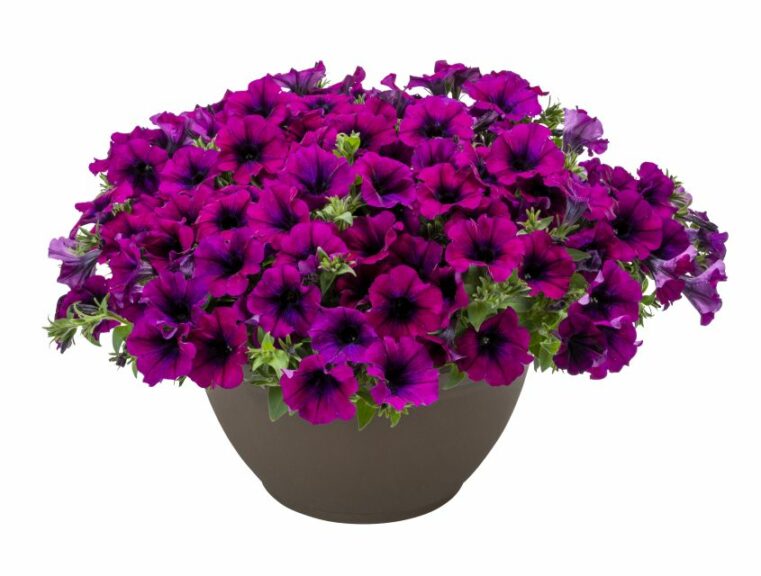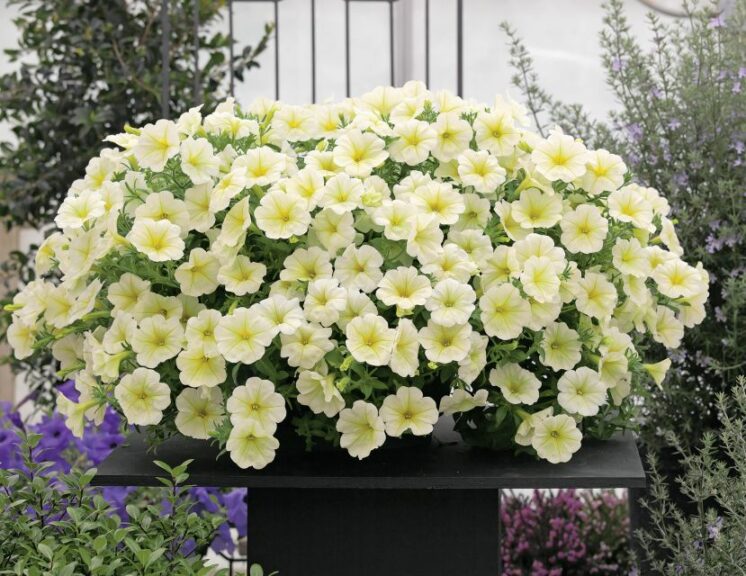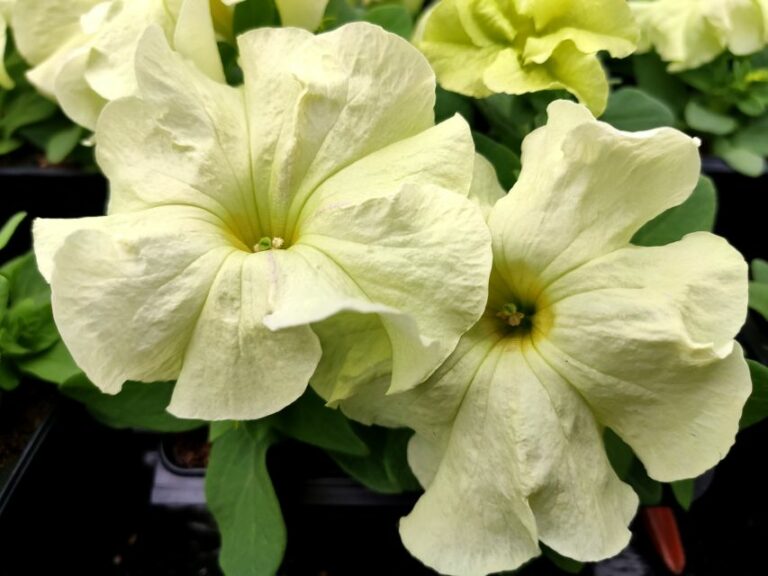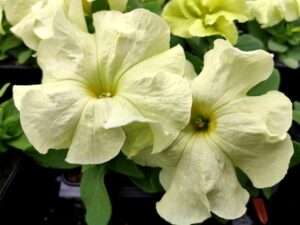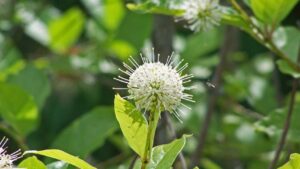Petunias: You’ve Come a Long Way, Baby!
Petunias are a staple crop for the ornamental industry and a versatile workhorse plant for use in containers, hanging baskets, and the landscape. In 2019, annual wholesale and retail petunia sales exceeded $230 million, according to USDA’s 2019 Census of Horticultural Specialties, making it safe to say the petunia has come a long way since the first domesticated petunia arrived on the scene. This timeline highlights some of the major breeding developments that occurred from the 1800s to the present. The images accompanying this article also give you a glimpse of new products available for retail sales in 2022.
Petunia Advances From Then to Now
- 1835: First mentions of hybrid petunias
- 1888-1930s: Petunias listed in Burpee and Vaughan’s catalogs. Petunia seed was also sold as an inbred line during this period.
- 1934: Sakata Seed introduces ‘All Double Victorious’, the first fully double, grandiflora-type petunia. It later becomes an All-America Selections (AAS) winner.
- 1939: Benary introduces an open-pollinated, dark purple, white-edged petunia.
- 1950s: PanAmerican Seed founders Charles Weddle and Claude Hope hybridize double and single grandiflora and multiflora petunias. Weddle wins an AAS award for ‘Silver Medal’, the first F1 single-flowered multiflora petunia.
- 1952: The first F1 grandiflora petunia from PanAmerican Seed wins an AAS award.
- 1953: PanAmerican Seed introduces ‘Comanche’, the first truly red multiflora petunia.
- 1977: Goldsmith Seeds introduces the first yellow petunia, ‘Summer Sun’, which was bred by Claude Hope.
- 1983: Ball Seed Company adds a new floribunda class to the petunia category with its introduction of the Madness Series.
- 1987: Peter Meyer of Planck Institute for Plant Breeding Research in Cologne, Germany, publishes a paper showing that inserting a maize gene into a petunia enables it to produce the pigment pelargonidin and take on a salmon color.
- 1987: Suntory breeds one of the first petunias from cuttings that would become the precursor to its Surfinia petunia line. Other breeder introductions of vegetatively propagated petunias soon follow.
- 1992: Spreading or trailing types of petunias debut.
- 1995: Petunia ‘Purple Wave’ (bred by Kirin Brewery in Japan), the first of a new class of spreading petunias and an AAS winner, is introduced by PanAmerican Seed.
- 1996: Goldsmith Seeds adds a new milliflora class to the petunia category.
- 2017: The discovery of unregistered genetically engineered petunias (petunias containing the corn or A1DFR gene) on the market leads to the subsequent removal of eight petunia varieties from greenhouses and retail shelves.
- 2021: Orange petunias legally return to the market with USDA’s blessings and thanks to the efforts of two breeders from Westhoff.
Did You Know?
- Petunias are named in honor of a French botanist named Petun, who collected the seeds from native stands in Argentina.
- The word petunia is from the native South American word ‘petun’, which is the name for tobacco, of which it is a close relative.
- In the 1500s, some people believed the petunia was a symbol of satanism as it was reputed to harbor anger and resentment.
- The domesticated petunia is a hybrid of two wild species — smaller purple flowers ( inflata) and one with large white flowers (P. axillaris)
- Petunia blooms are edible when free of pesticides
Sources:
- “Petunias Rooted in History Decades Later, Colorful Annuals Still Garden Favorite”; Tom MacCubbin; The Orlando Sentinel
- Petunia History, Esbenshade’s Garden Center, esbenshades.com
- The History of the Petunia; Amanda Davies; blog.thompson-morgan.com
- Fun Facts, Did You Know; surfinia-official.com
1
1
5
Petunias: You’ve Come a Long Way, Baby!





